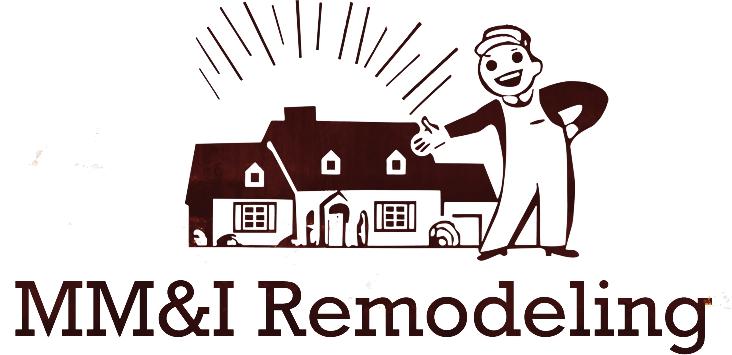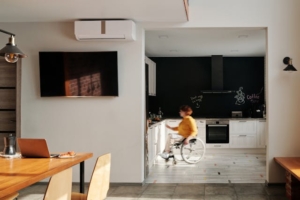Universal Design in Home Renovations Adapting Spaces for Accessibility and Aging-in-Place
Feature image Alt text: An older Asian couple smiling and hugging
Thank you to the talented content team of Mary Aspen Richardson for this insightful post.
************************************************************************************************************
The concept of universal design is rapidly gaining traction. This approach, rooted in creating spaces that
are inclusive and accessible to all, regardless of age, size, or ability, is transforming how we think about
our living environments. Adapting spaces for accessibility is not a trend; it’s a crucial step toward
enhancing everyone’s quality of life. As the population ages and the awareness of the diverse needs of
individuals with disabilities increases, the importance of accessible home designs becomes more
evident. This blog explores the significance of universal design in home renovations, emphasizing its vital
role in supporting aging-in-place. It will provide insights into how simple changes in design can have an
impact on people’s daily lives.
Understanding Universal Design
Universal design originated from the desire to create environments that are inclusive and usable for
everyone. It extends beyond accommodating disabilities, aiming for designs that are inherently
beneficial for a wide spectrum of users. This concept emerged in the late 20th century. It is attributed to
architect Ronald Mace and his North Carolina State University team. The seven universal design
principles include:
1. Equitable use
2. Flexibility in use
3. Simple and intuitive use
4. Perceptible information
5. Tolerance for error
6. Low physical effort
7. Size and space for approach and use
These principles serve as a comprehensive guide for designers and architects all over the world. They
emphasize the need for environments that cater to a diverse range of users and abilities. It challenges
conventional home design by promoting an ethos where usability and aesthetics coexist, leading to
living spaces that are functional, welcoming, and comfortable for all.
The Need for Adapting Spaces for Accessibility
The demographic shifts toward a growing elderly population, coupled with increased awareness of the
needs of individuals with disabilities, highlight the urgent need for accessible home designs. Traditional
home structures often present challenges to these groups, including narrow doorways, steep stairs, and
high cabinets. These barriers can impede mobility and independence, making daily activities more
challenging.
Adaptable homes address these issues, transforming living spaces into safe, comfortable, and
convenient environments for everyone. The benefits of such designs are vast, fostering independence
for older adults and enhancing the quality of life for people with varying abilities. Accessible homes are
not just about comfort; they are about creating an inclusive environment where everyone, regardless of
age or ability, can live without facing unnecessary obstacles or hazards.
Revamping Kitchens with Universal Design
The kitchen, often the heart of the home, can present numerous challenges in terms of accessibility. A
universally designed kitchen considers various user needs, ensuring that it is functional, safe, and
comfortable for all. Adjustable countertop heights can accommodate wheelchair users or those who
prefer to sit while working. Strategically placed appliances and pull-down shelving minimize the need for
reaching or bending, making kitchen tasks more manageable.
Accessible storage solutions, such as lower cabinets and drawers with easy-pull handles, ensure that
utensils and ingredients are within easy reach for everyone. Thoughtful design elements, like slip-
resistant flooring and well-placed lighting, can significantly enhance safety and usability.
Caption: In the kitchen, it’s important to have lower cabinets and appropriately placed appliances so wheelchair users can access them. Alt text: Woman in a wheelchair, in the kitchen with black walls and white cabinets
Making Bathrooms More Accessible
When adapting spaces for accessibility, bathrooms often need significant modifications. Key adaptations
include walk-in showers with no-step entry, which make shower access easier for those with limited
mobility. Bathtubs can be modified with transfer benches or walk-in features. Grab bars strategically
placed near the toilet and shower area provide necessary support, reducing the risk of slips and falls.
Anti-slip surfaces in the shower and on bathroom floors are essential for safety. Height-adjustable or
floating vanities can accommodate users of different heights and those in wheelchairs. Thoughtful
consideration of faucet handles, such as lever types that are easier to grip and use, add to the
bathroom’s functionality. These bathroom adaptations are crucial for creating a comfortable space and ensuring dignity and independence for users with diverse needs.
Caption: Some necessary bathroom modifications include adding transfer benches and grab bars in the shower area. Alt text: Close-up of a black showerhead
Budgeting for Aging-in-Place Renovations: The Full Picture
Setting a realistic budget is crucial when planning home renovations for aging in place. These costs
include the price of materials and labor for modifications and other often-overlooked expenses. Imagine
a scenario where a senior is moving from their long-time home in Florida to a newly renovated,
accessible home in Texas. In such cases, an important budgetary consideration is the cost of moving.
Opting for specialized senior movers experienced in handling the unique needs of older adults during
state-to-state relocations can ensure a smooth transition to the renovated home.
These movers are adept at safely transporting and setting up homes in a way that complements the
modifications made for accessibility. Including the cost of such specialized services in the overall budget
is essential. It ensures that all aspects of transitioning to an aging-in-place home environment are
covered and prevents unexpected expenses.
Caption: Adapting spaces for accessibility and aging-in-place can be costly, so setting a realistic budget is paramount. Alt text: A calculator, a pen, a notepad, and some dollar bills, budgeting for adapting spaces for accessibility
Finding the Right Professionals
Achieving a successful universal design in home renovations requires expertise. Homeowners should
seek contractors who specialize in accessible design and have a track record of successful projects.
Collaborating with occupational therapists or accessibility consultants can provide insights into specific
needs and practical solutions.
These professionals can help create a comprehensive plan that addresses current needs while being
adaptable to future changes. It is essential to involve experts early in the planning process to ensure that
all modifications are thoughtfully integrated. The collaboration between homeowners and skilled
professionals can result in renovations that are not only functional but also aesthetically pleasing.
Conclusion
Universal design in home renovations represents a profound shift in how we create and modify living
spaces. It’s about more than just aesthetics; it’s about adapting spaces for accessibility and ensuring
comfort, safety, and independence for all occupants. As we embrace an aging population and recognize
the diverse needs of individuals with disabilities, the importance of accessible design becomes
increasingly clear. Incorporating universal design principles in home renovations benefits individual
households and contributes to a more inclusive society. As we look to the future, it’s a necessary step
towards building a world where aging-in-place is accessible to all.
Meta: Explore our comprehensive guide on universal design in home renovations, offering expert tips on
adapting spaces for accessibility and aging-in-place.
KW- adapting spaces for accessibility
Images used:
https://www.pexels.com/photo/smiling-man-and-woman-wearing-jackets-1642883/
https://www.pexels.com/photo/woman-in-wheelchair-in-kitchen-4064693/
https://www.pexels.com/photo/black-shower-head-switched-on-161502/
https://www.pexels.com/photo/calculator-and-notepad-placed-on-usa-dollars-stack-4386366/





